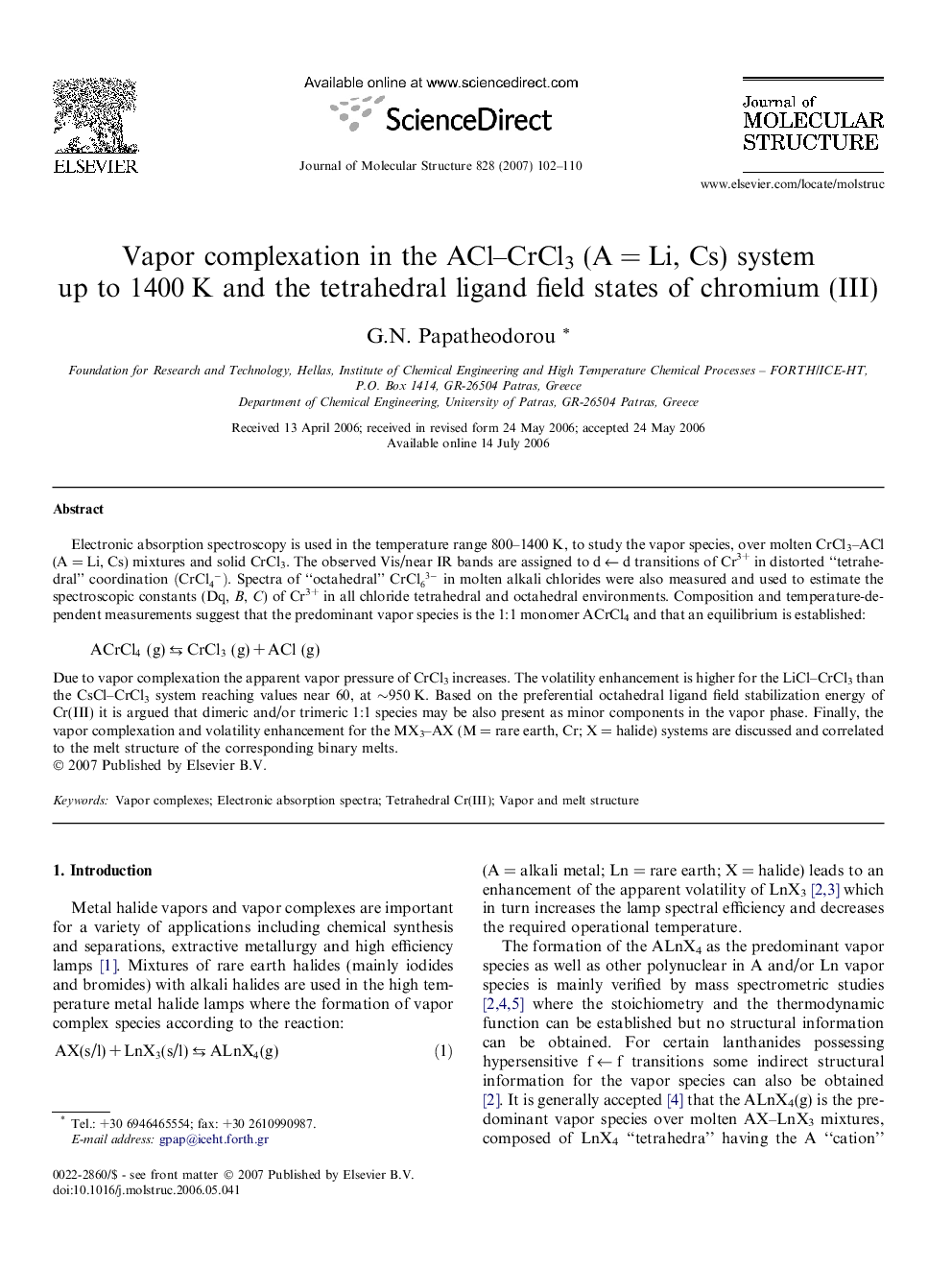| Article ID | Journal | Published Year | Pages | File Type |
|---|---|---|---|---|
| 1411898 | Journal of Molecular Structure | 2007 | 9 Pages |
Abstract
Electronic absorption spectroscopy is used in the temperature range 800-1400 K, to study the vapor species, over molten CrCl3-ACl (A = Li, Cs) mixtures and solid CrCl3. The observed Vis/near IR bands are assigned to d â d transitions of Cr3+ in distorted “tetrahedral” coordination (CrCl4-). Spectra of “octahedral” CrCl63- in molten alkali chlorides were also measured and used to estimate the spectroscopic constants (Dq, B, C) of Cr3+ in all chloride tetrahedral and octahedral environments. Composition and temperature-dependent measurements suggest that the predominant vapor species is the 1:1 monomer ACrCl4 and that an equilibrium is established:  ACrCl4 (g) â CrCl3 (g) + ACl (g)Due to vapor complexation the apparent vapor pressure of CrCl3 increases. The volatility enhancement is higher for the LiCl-CrCl3 than the CsCl-CrCl3 system reaching values near 60, at â¼950 K. Based on the preferential octahedral ligand field stabilization energy of Cr(III) it is argued that dimeric and/or trimeric 1:1 species may be also present as minor components in the vapor phase. Finally, the vapor complexation and volatility enhancement for the MX3-AX (M = rare earth, Cr; X = halide) systems are discussed and correlated to the melt structure of the corresponding binary melts.
Related Topics
Physical Sciences and Engineering
Chemistry
Organic Chemistry
Authors
G.N. Papatheodorou,
